People either do what you want. Or they don’t.
And there’s not a whole lot you can do about it.
Except react. Except follow-up based on a new set of rules.
That doesn’t mean you can’t predict it, though. That doesn’t mean you can’t manipulate it. It doesn’t mean you can’t choreograph it ahead of time.
Almost every single customer interaction presents an IF/THEN scenario. They either choose to do one thing, do the opposite, or do nothing at all. And each option means you should react in a slightly different way.
The good news is that you can do it in advance. You can determine what happens, before it happens, so the message they receive next is always the right one.
Here’s how to get this insight and react in real-time to give people exactly what they want, when they want it.
1. Start by setting objectives
Personalization isn’t “Hey $FNAME.”
It’s deeper than that. It’s about collecting various data points so you understand context. So you ‘get’ what someone wants before they want it.
In a Spy’s Guide to Strategy, ex-CIA case officer, John Braddock, says that creating a strategy comes starts with two moves:
- Identifying someone’s potential end game, and then
- Reasoning backwards to figure out how they get their.
That way, you can see what’s coming. Only when you know where someone is trying to go can you create scenarios for how they might get there.
Content mapping is a perfect real-world example.
Some people come to your site to buy. But not most. Only a tiny slice ready to hit the Product Tour and Opt-in page before reading “Thank You.”
Others want pricing. Some want insights. And still more want information.
Which is why content mapping says you gotta give all those things to all those people. Make them stick around. Get them to click. Get them to come back.
The trick is to start here. Without determining who wants what, you can’t figure out how to get them there the fastest and easiest.
Marketing isn’t a singular campaign today. It’s not a banner ad or a drip email sequence.
Instead, it’s a series of IF, THEN statements. Conditional statements that show how people get form A->B, and then somehow to Z.
Z is what you want. Z is where you purchase. But people don’t start with Z.
That’s why you break the process down. A->B becomes a micro-conversion. It’s the step between the step. The guy behind the guy. That eventually makes stuff happen.
You start by hypothesizing. You try to infer what someone wants. Then comes the “then.”

“Then” is when stuff happens. It’s your response.
Product companies are relatively simply. People check out a product but don’t buy. So you follow-up with retargeting efforts.
Easy, right?
Not so much for services. The sales process takes months instead of weeks. It takes nurturing instead of discounts.
Let’s say someone checks out your services. They check out some key pages. But they don’t opt-in.
“Free consultation” time? Not necessarily. That’s also not very inspiring.
So you switch it up. You could try an offer to get them to realize how much they need you. You need to make the pain real. You need them to place a dollar value on it. Otherwise, no sale.
That starts with a 1-1 conversation. It’s a spin on the “Free Consultation.” Except it doesn’t suck. It’s focused on their issues, not your own.
The goal: Get people who checked out our Services into this new 1-1 offer.
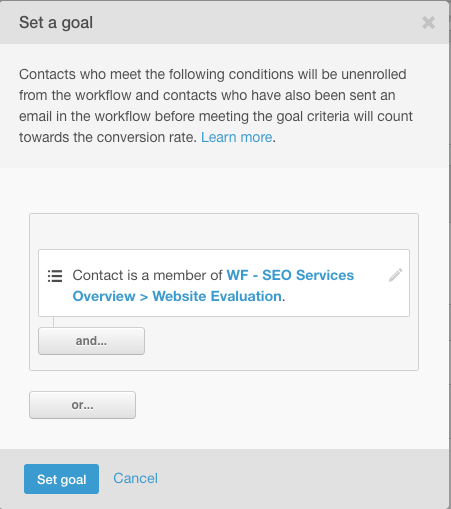
Next, you work backwards. You set-up the sequence to determine how someone is going to get from A->B.
Automation workflows can help you map this out. For example, if someone looks at the services page but doesn’t convert, do this next.
“This” could be “send new email.” Perfect.
Now do it again. This email goes out. Do they click on the CTA link?
Yes or no.
If yes, but they don’t sign up for your offer, it’s a no. Or it might as well be. So respond accordingly.
These sequences repeat ad nauseam.
There’s no limits. That’s the beauty. And with some iteration, you can automate most of the entire process.
Setting a clear objective like that leads you seamlessly into the next step. Select your segment.
Except, you don’t create these segments out of thin air. Or you shouldn’t.
You should let people tell you where they belong.
2. Segment new leads
How do people get to your site?
They could punch in the URL directly. They could serendipitously run across your blog post on Twitter. Or they could find your aforementioned Services page by clicking on your Google ad.
Each of these are different channels, sure. But they’re more than that. They’re giving you more information than that.
✅ The direct website visit? Brand-aware. Been to your website multiple times before. Probably transitioning from stranger to lead.
✅ Twitter? New visit. Stranger. Needs more info to develop brand recognition.
✅ Google search ad? Also not brand-aware. But problem-aware. Probably solution-aware. Show them why you’re better.
Now, keep them separate. Don’t treat them the same.
Their under-the-radar behavior is already telling you something important. So keep it going by segmenting their journey.
Create different flows. Create different segments for each.
Sometimes you have control over this. And sometimes you don’t.
For example, if you’re creating an ad, you control the landing page destination.
When you’re writing a blog post, you can control the internal links or other navigation elements they see.
But when someone finds something from organic search? You can’t always control everything.
Once again, marketing automation platforms can tell you the trigger. They can tell you the exact page someone visited. First. So you roughly know who they are or what they’re looking for.
They could leave your site right now and it would be OK. They could get distracted. Bounce. And you’d be fine.
‘Cause you’ve got the same ability to retarget in other places based on individual page views.
You can see which of the three products they clicked on. You can see which of the five services they expressed the most interest.
That tiny clue adds context. You should know what to follow-up with.
Similarly, someone views your opt-in form but doesn’t convert.
No prob. You can still follow up. You can still tailor the message based on their non-action. You can cycle through common objections until you land on what that sticks.
This is where personas often fail. This is where ‘segments’ often don’t work.
Your decision-making data should come from people’s actions. Not just your own hunches.
3. Nurturing & re-engagement
Eventually, someone opts-in.
Someone finds something like they like and gives you something in return.
On the one hand, it’s great. You’re one step closer.
Except on the other, it changes everything. You need to update things. You need to evolve the conversation.
For example, let’s say someone downloads an eBook. Then your free trial or 1-1 offer. Both good things.
Except, it creates a rippling effect.
For example, you need to work backwards before you work forwards. You need to remove people from previous sequences because their status has changed.
Those top of the funnel eBook nurturing emails worked. Wonderfully! But now that they’ve moved deeper, they need a new sequence. Only after removing them from the previous one.
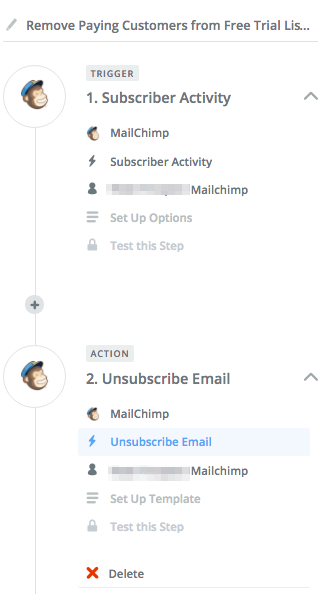
Bad news, though.
One person moved forward. They went from TOFU to MOFU or BOFU.
But most don’t. Or won’t.
So let’s plan for that, too. Someone downloads the eBook. Maybe they even enjoy it. But after the first few weeks, nothing else happens.
They received the same nurturing emails. But decided against taking you up on the next offer. For whatever reason.
Same objective as the first, but a new segment this time.

What’s happening here:
- It’s been at least 35 days since someone downloaded the eBook. The reason? It gives your other campaigns at least four weeks to try and move them down the funnel.
- Unfortunately, it didn’t work. The individual didn’t opt into any other offer you threw at them, either. No other forms were filled out.
Cool. No worries. Water off a duck’s back.
IF, you saw this coming. IF, you have a scenario planned out for them.
Typically, you want to get them to ‘reengage’ here. So new emails go out. Each, with different links like this next one.
Those are all unique links. They’re split up by topic. You’re setting a trap. You’re baiting a hook.
For someone’s action to once again tell you how to better segment them.
Let’s say someone clicks on the fifth option down: “Optimizing Your Website.” That indicates they’re interested in, well, updating their website.
Cool. You saw this coming. Savvy marketer, you.
That pulls them into a brand new segment. Seamlessly and automatically.
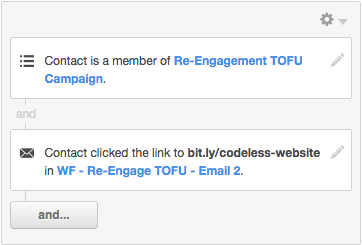
Now, you can tailor the next few messages better. You can send them website-related tips, instead of SEO ones. You can send them more relevant offers that they’re more likely to take you up on.
Which puts you one step closer.
4. Sales qualification
Ecommerce is easy. Someone buy’s or they don’t. Most customers are ‘good,’ as long as they’re paying.
Services ain’t easy. Most leads and prospects won’t become customers.
In fact, you can take this a step further. A small segment of people will want to work with you. But for a few different reasons, you won’t want to work with most of them.
You want the best customers. You want those that will be the best fit. The ones that ideally also have the longest lifetime value.
Which means you need to qualify. Which means you need to plan for this in advance.
You know many people who fill out your form won’t be a good fit. So you add a couple qualifying questions to the bottom of your form.
“Annual Revenue Range” can tell you a few things. It can tell you, right off the bat, if they can even afford you. Not worth jumping on the phone if they can’t.
But it can also tell you what product or service they might be best suited for.
As does “Biggest Marketing Challenge.” It helps you figure out what solution to line up with their problem.
It also helps you logistically. The person or division doing $100,000 websites will be different than the one doing $1,000,000 ad campaigns. So they need to be routed appropriately, too.

Now, think of your process and workflow. Each little decision or potential answer has another trickle down effect. It influences everything that happens afterward.
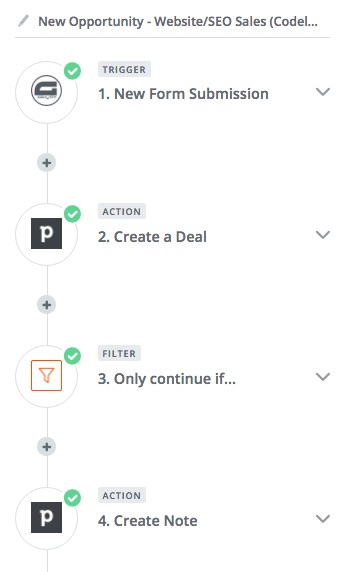
You need filters and branches and IF/THEN statements along the way. That way, you can take all of the various possibilities into account.
Before they happen. So you know exactly how to respond. When it eventually does.
 https://blog.kissmetrics.com/read-minds-to-close-more-deals/
https://blog.kissmetrics.com/read-minds-to-close-more-deals/
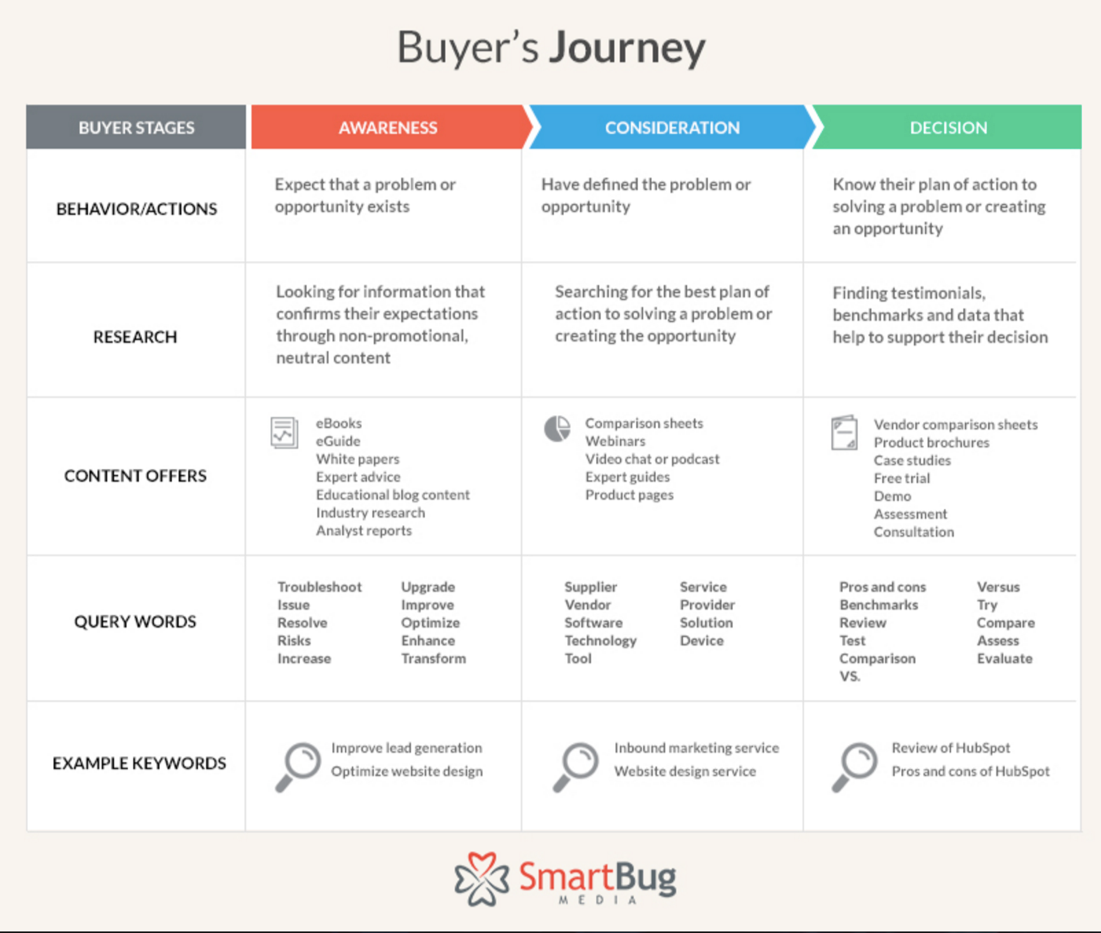
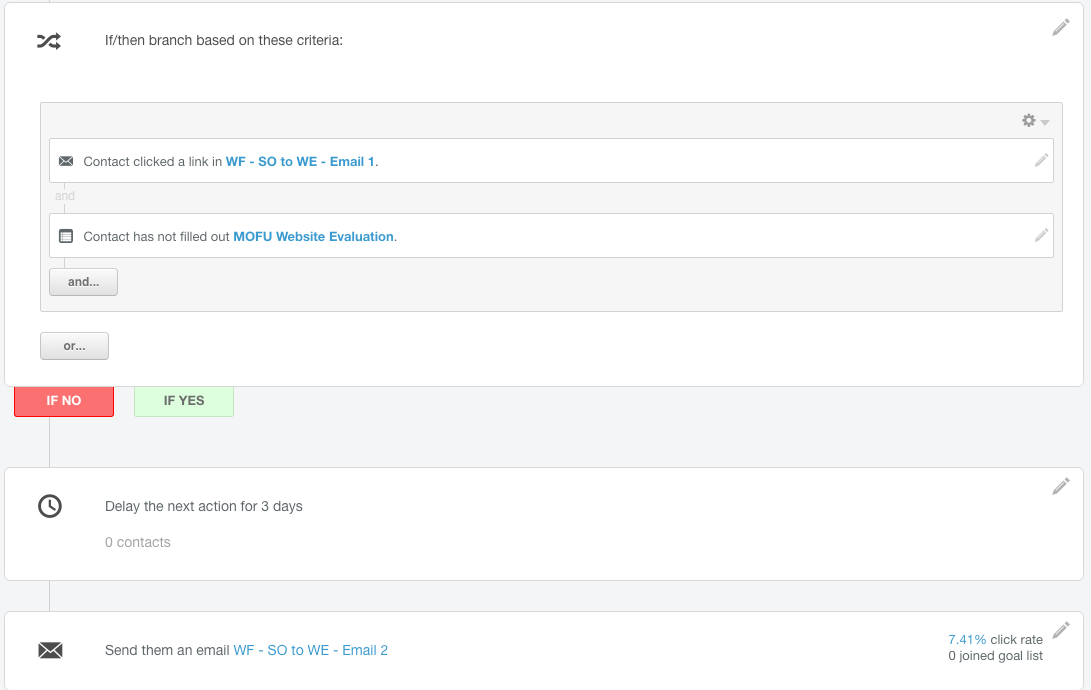

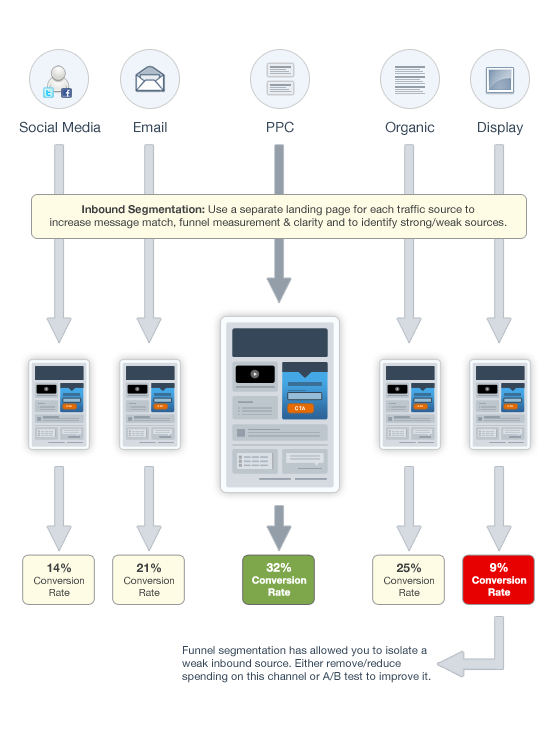
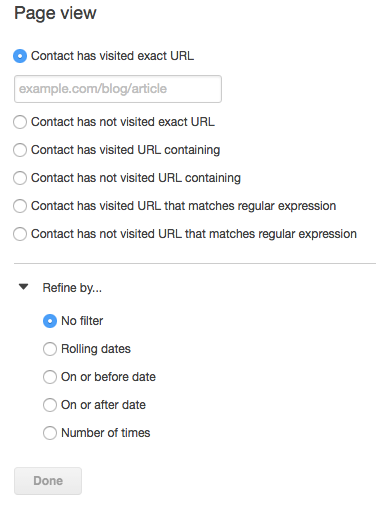

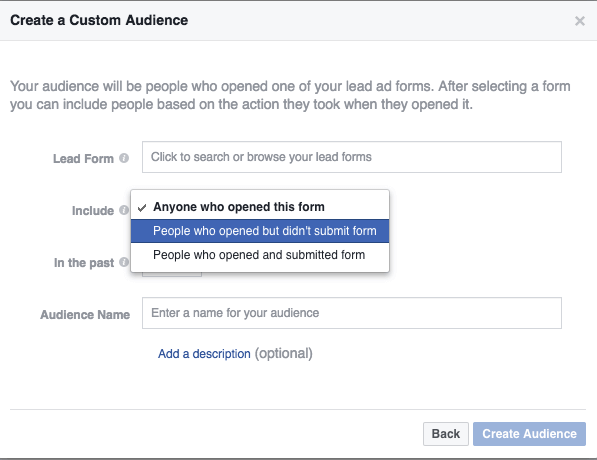
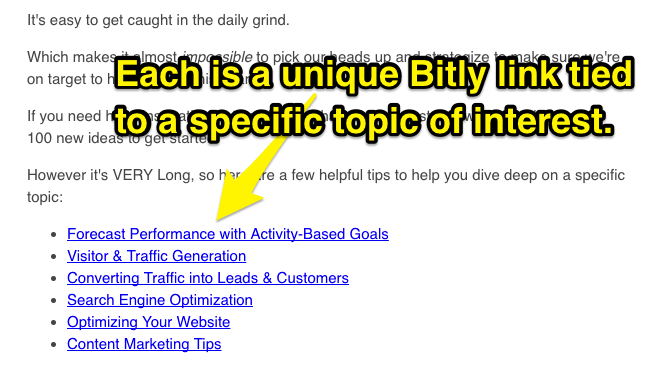
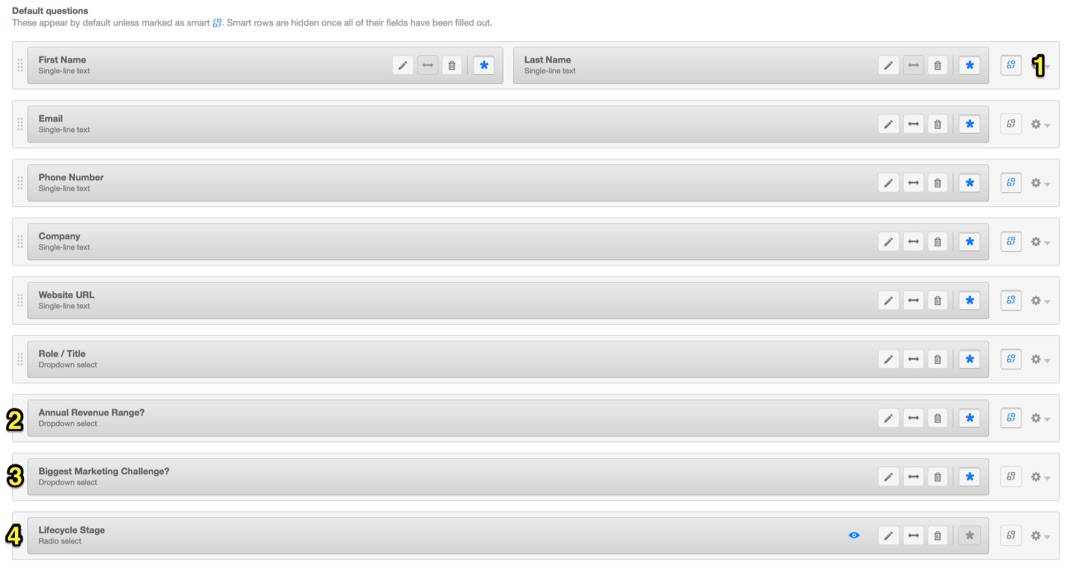
No comments:
Post a Comment